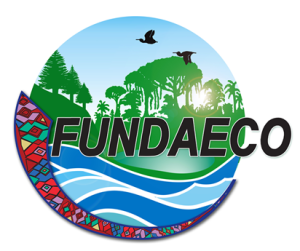EbA Solutions for Urban Resilience: Scaling Up the Metropolitan GreenBelt Initiative in Guatemala City
Project Information
Guatemala city is the main capital of Central America, but also one of the 11 most vulnerable cities to climate change in the world, confronting risks such as dwindling groundwater, landslides, and heat islands. Yet, the city holds a unique advantage – the forest remnants in the ravines that weave through the urban core and the wooded hills and mountains in its surroundings. These natural features form integral parts of the Metropolitan Green Belt initiative, functioning as ecosystems poised to actively combat climate change risks.
Embarking on a visionary project, FUNDAECO aims to implement an Ecosystem-based Adaptation (EbA) approach with planning, regulations, and targeted solutions. The project’s multifaceted strategy includes:
- Unleashing the power of the EbA approach through a dynamic multi-actor platform, underpinned by a participatory Action Plan. Here, stakeholders become catalysts, acting as implementers and champions for EbA solutions.
- Planning and implementing forest protection actions to preserve the ecosystem in one of the city’s highest water recharge zones, safeguarding the lifeblood that sustains Guatemala City.
- Executing a groundbreaking project to enhance groundwater recharge in a ravine within a high-development urban area, creating a resilient haven amidst progress.
- Designing and promoting two innovative public policy instruments embracing EbA principles. One, dedicated to mitigating and compensating for the impacts of urban development on groundwater, and the other, to integrate EbA into the National Climate Change Adaptation Plan.
In the tapestry of Guatemala City’s landscape, we are weaving a narrative of sustainability, resilience, and proactive adaptation for more than 3 million of the city’s inhabitants.
Project Update
Fostering Community Engagement and Environmental Stewardship through “Park Fridays”:
Nature-based solutions have the potential to promote a better understanding among society about ecosystem services, as well as to contribute to the citizens’ right to a more equitable city by creating public green spaces. The project, in collaboration with the Ministry of Environment and Natural Resources, and several municipalities, has organized “Park Fridays,” a program that has facilitated guided visits to 6 urban ecological parks. The promotion and use of this network of green areas in the metropolitan ecological belt contribute to improving collaboration and engagement among actors from the civil society, public sector, and private sector. The idea is to create a critical mass of support for the public policies and planning instruments being promoted as part of the project, including the Green Master Plan, the EbA Action Plan, and other municipal regulations.
“Together with neighbours and public and municipal officials we are exploring our territories, forging connections, and paving the way for a sustainable city.”
Project Status
Ongoing

